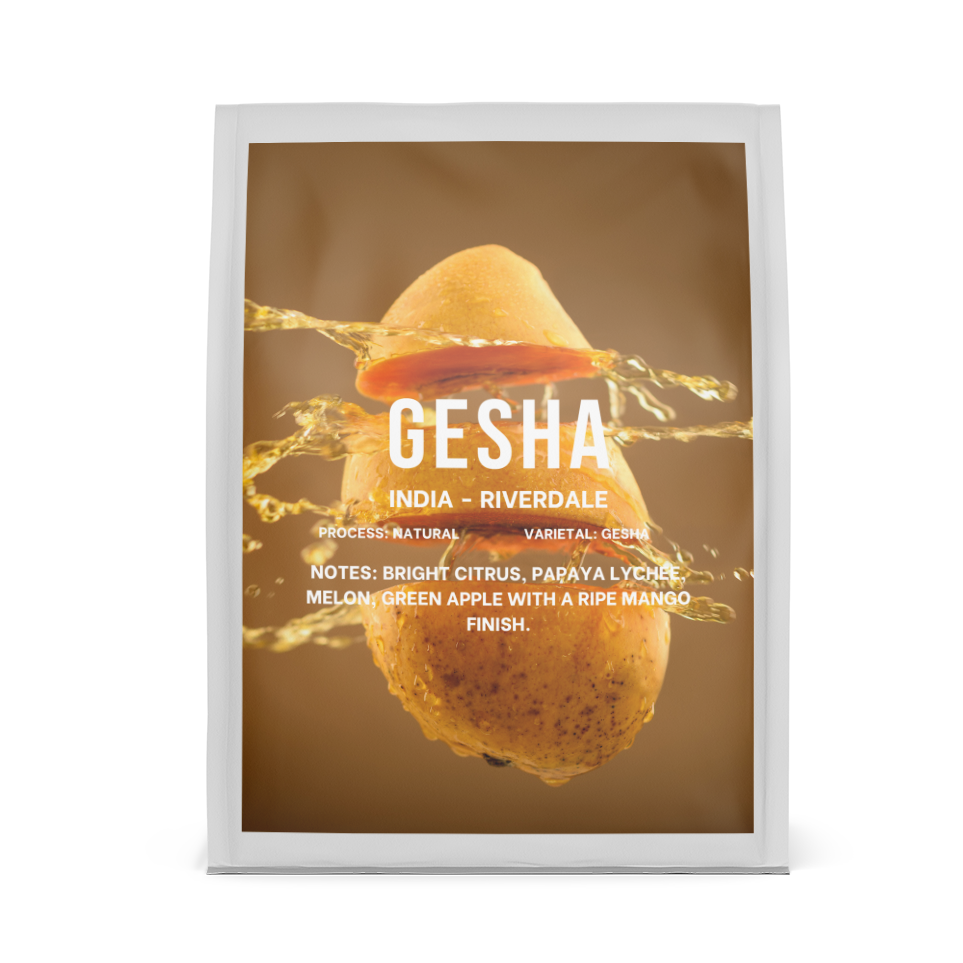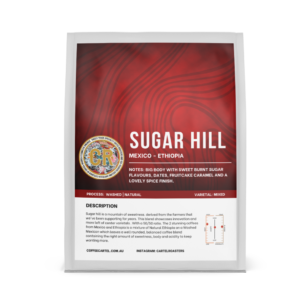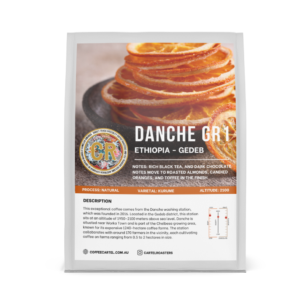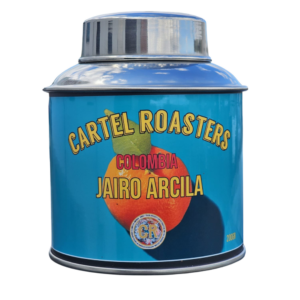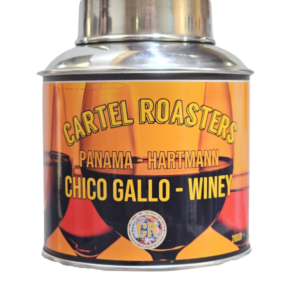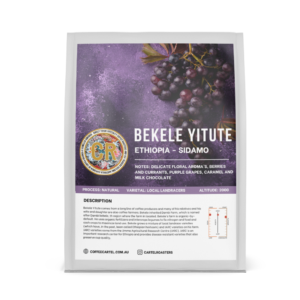About this coffee
- Altitude: 1700
- Farmer: PRAKESH BALARAMAN - RIVERDALE ESTATE
- COUNTRY: INDIA
NOTES: BRIGHT CITRUS, PAPAYA LYCHEE, MELON, GREEN APPLE WITH A RIPE MANGO FINISH.
This is the first Gesha coffee ever produced from India , this Green tip variety Gesha seedlings was hand selected and sourced by Nathan 4 years ago and planted in Riverdale estate, India. We planted the gesha in the higher elevation near the waterfall where the soil is naturally high in nutrient , rich in organic matter and moist all year around. During the flowering season we irrigate these Gesha plants so the flowering happens way before the SL9 variety to keep the purity in every cup . In the last 4 years the Gesha plants have been nurtured and care for and it finally been made to Australia . We are excited and humbled to be with working with Nathan Cartel roasters for his unconditioned support and love to coffee
This Gesha natural process has been selectively hand picked of the ripest the cherries, they are then sorted and then rinsed with fresh spring water in the floatation tanks to remove debree and floaters and then the whole cherries are dried on raised drying beds for 30 days
–
Riverdale Estate is located in the lovely Shevaroys Hills (Yercaud) in southern India, The estate has a abundance of natural spring water streaming from the earth which flows throughout the year making it a very interesting place to cultivate coffee plants and other intercrops like silver oak, jack fruit orange, avocado and pepper.
The common varietal grown is Selection 9 and S5b variety of Arabica they have also planted several test exotic varietals of gesha and yellow bourbon.
At Riverdale Estate all coffee is grown under tall shade trees that helps to retain moisture level and biodiversity within the plantation. They believe in sustainable farming which improves the soil quality, & in turn gives us the consistent coffee beans year after year which we only improve through consistent monitoring of daily occurrences through the careful processing months like weather, water conditions, fermentation temperatures and separation of micro-lots and drying times.
Enjoy these lots I believe they are continuing to push the boundaries of quality in India and am proud to be apart of the team.
Coffee in India was started when Saint Babba Budan first smuggled Seeds from Yemen. Nuns from his hermitage first brought them to India and it was primarily a crop grown out of curiosity in people’s’ personal gardens. In the 1800’s coffee became commercialised with the British conquest of of India. Because of the mismanagement of farms Arabica was difficult to grow and pests and leaf rust decimated crops. Robusta became India’s prime coffee export for much of the 1800’s, hence why Robusta is exchanged in the London exchange.
In the early 20th century Arabica saw a resurgence in India due to some research from the British-Indian Government into disease prevention, soil maintenance and better farming techniques. Shortly before Indian Independence the Indian coffee board was established via the Indian Coffee Act 1942. The board established a central governing body overseeing growing research, import and export data, overseas promotion and farming assistance.
As of 2018 Indian coffee has seen an overall steady growth trend of both production and export. Arabica and robusta have been planted in about equal parts since about 1960, however the production of India currently leans about 70% robusta. 70% of farms are small holdings (Classified as holdings less than 10 Hectares). On average a farm worker in India earns 261 Rupees a day ($3.81 USD).
Specialty coffee data in India is difficult to come by as Indian government classification of Specialty coffee is based on what should more be called ‘specialised coffee’. The specialization coming from a special process called “Monsoon Malabar.” The process entails the cherries being sun dried, and then exposed to monsoon winds, rains, and humidity (Editors note, not great for coffee, but can be great whiskey). The beans expand and contract with the pressure changes. When the process is finished (After almost 3 months) the beans have a more yellow colour as opposed to the usual green. The resulting flavour tends to be a very heavy body with some nuts and spices, however there tends to also be a lingering dryness.
Some of the reason this coffee is considered specialty has to do with India’s grading system which follows a style similar to Kenya, based on Size. Monsoon Malabar can only be AAA, AA, and A. Premium coffee includes all the A sizes, as well as PB, while the rest of coffee is classed as C grade or bulk. It is important to note that none of these grades have anything to do with growing or processing quality, it merely reflects size.
India is the 6th largest exporter of Coffee in the world with almost 70% of its total yield going overseas. 20-25% of that goes to Italy, with Russia, Turkey, Belgium and Germany making up the rest of the top 5 of Indian coffee exports.
Welcome to Riverdale Estate, this farm is located in the lovely Shevaroys Hills (Yercaud) in southern India, The estate has a abundance of natural spring water streaming from the earth which flows throughout the year making it a very interesting place to cultivate coffee plants and other intercrops like silver oak, jack fruit orange, avocado and pepper.
Fragrance and aroma is incredible.
Brewed on both V60 and flat bottom dripper. Would recommend a flat bottom brewer as it gives an overall better rounded flavour. The mango on this is fantastic. Very clean, high quality coffee. I’m a fan.
Best results so far: Brewed at 93c 13:200 in 2 pours of 100ml with a 60 sec bloom.

